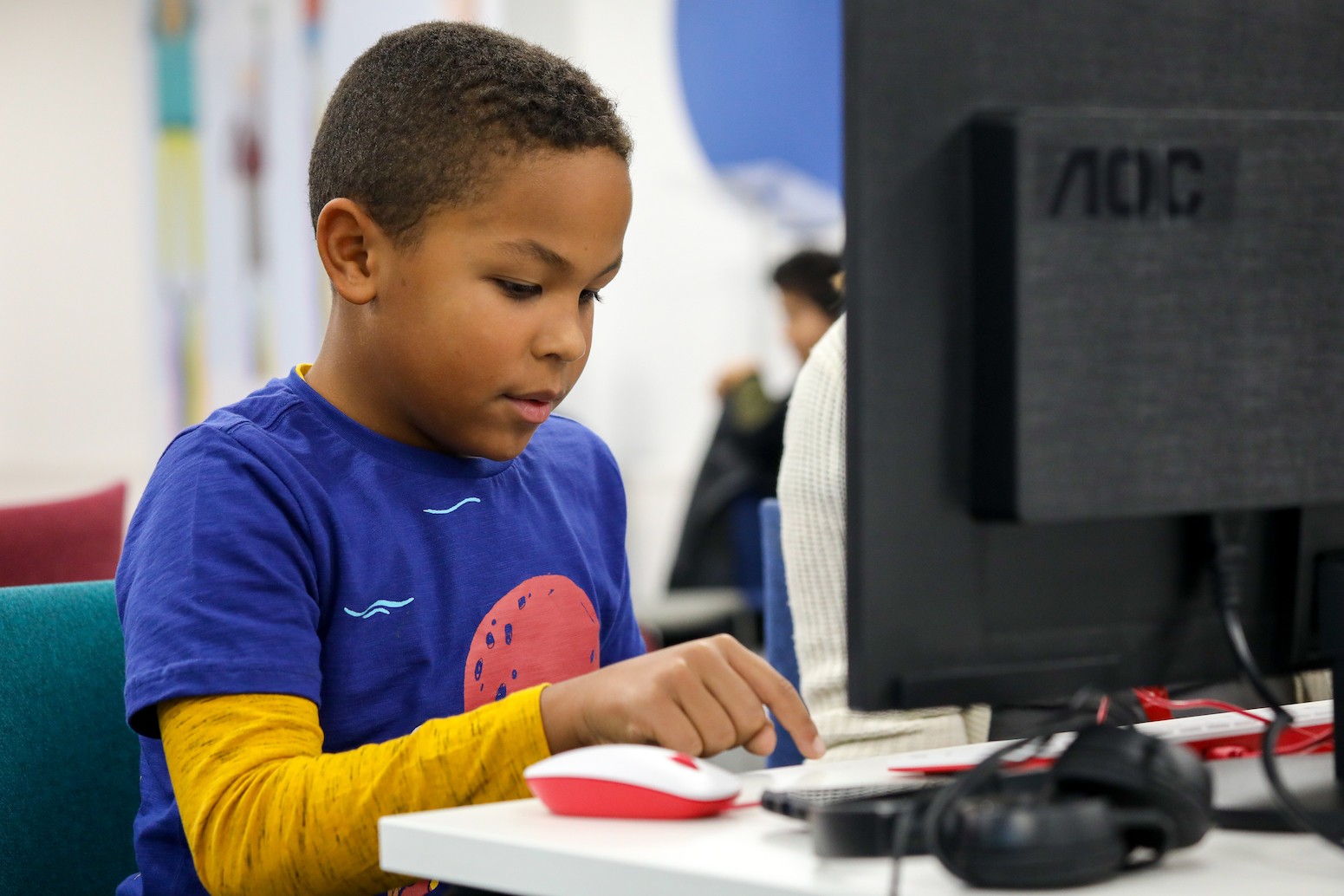When to Start Teaching Your Child Web Development
Jan 22, 2025
Read: What is the Right Age to Start Coding?
Read: Is Coding a Good Career Path? Exploring Opportunities and Salaries
Read: The Advantages of After-School Coding Programs for Teens
As of 2025, technology continues to progress at an even faster rate, offering new tools, frameworks, and learning platforms for kids and teens. But what is the best age to introduce web development? In this updated guide, we’ll explore the right approach to teaching coding for web development based on age, from early concepts to full-fledged applications, while factoring in 2025's advancements in education and technology.
Ages 5-7: Fun, Exploration, and Basic Concepts
At ages 5-7, children are primarily building logical thinking and foundational skills needed for coding. At this stage, it’s essential to make the introduction to web development interactive and fun. Even though kids aren’t creating websites yet, they can start to explore the basics of problem-solving, sequencing, and critical thinking, which are key in any programming language.
Focus Areas:
Introduction to Problem Solving and Logic: Teach them basic concepts like sequences, cause and effect, and patterns.
Interactive, Visual Learning Tools: Tools like Scratch, Tynker, and Blockly can make learning playful and intuitive. These platforms are now more advanced in 2025 with even more interactive features, making it easier for kids to grasp coding fundamentals without any prior knowledge.
Best Tools for Learning in 2025:
Scratch 3.0: The latest version introduces more advanced features like extension support for hardware projects (e.g., robots), allowing kids to go beyond screen-based activities. (Scratch 3.0)
Blockly: Now integrated with new Google technologies to simplify and gamify learning, providing a seamless experience for younger kids. (Blockly)
Tynker: In 2025, Tynker has expanded its offerings with courses that bridge the gap between beginner coding and more advanced programming for web development. (Tynker)
Ages 7-10: HTML, CSS, and Basic Web Pages
By ages 7-10, children can start exploring HTML and CSS, the building blocks of web development. This is the perfect age to introduce web creation in a simple, visual way, where kids can understand how to structure and style a webpage. Web development tools in 2025 are more intuitive and beginner-friendly than ever before.
Focus Areas:
HTML Basics: Kids can start understanding the structure of web pages and the essential elements of HTML like headings, paragraphs, and images.
CSS Styling: Introduce simple styling concepts like colors, fonts, and layout. In 2025, more visual tools allow kids to learn CSS interactively and see real-time updates as they modify styles.
Simple Projects: Encourage creating basic web pages like a “My Favorite Things” page or a personal home page. The goal is to empower them to create tangible projects.
Best Tools for Learning in 2025:
Code.org: Continues to be a strong resource, offering courses that introduce web development through interactive lessons and challenges. The 2025 update focuses more on HTML, CSS, and introduces React at an early stage for interested learners. (Code.org)
Wix and Google Sites: In 2025, these platforms have enhanced their drag-and-drop interfaces for younger users, allowing them to easily create and personalize their first websites. (Wix, Google Sites)
Webflow: Now featuring educational materials geared toward kids, Webflow provides an easy entry into web design and allows children to create professional-looking websites without needing to learn complex code. (Webflow)
Read: Pinecone Kids Coding Academy: What Makes Us Different
Read: Which Coding Program is Best for Your Child? Winter Camp, Summer Camp, or After-School Coding Classes
Ages 10-12: Introduction to JavaScript and Dynamic Websites
By ages 10-12, kids are ready to dive deeper into JavaScript, the programming language that adds interactivity to websites. With JavaScript knowledge, they can go beyond static web pages and begin to build simple interactive features.
Focus Areas:
HTML/CSS Advanced Topics: By now, children should be familiar with the fundamentals of both HTML and CSS, and they can start exploring more advanced techniques like CSS Grid, Flexbox, and embedding media.
Introduction to JavaScript: Teach kids how JavaScript can make web pages interactive, like creating simple forms, buttons, or pop-ups.
Basic JavaScript Projects: Kids can start creating simple JavaScript-driven websites, such as interactive games or quiz apps, using JavaScript to control events and behaviors on the page.
Best Tools for Learning in 2025:
Khan Academy: The JavaScript and HTML/CSS tutorials on Khan Academy have been updated for 2025, offering a more immersive experience with real-time coding environments and interactive lessons. (Khan Academy Web Development)
CodeCombat: A game-based learning platform where kids can learn JavaScript and Python by solving coding challenges in a gaming environment. (CodeCombat)
Replit: In 2025, Replit has become even more collaborative, allowing kids to code in real-time with others and access cloud-based environments that require no setup, making web development even more accessible. (Replit)
Ages 12-14: Full Web Development and Frameworks
At ages 12-14, teens can start to tackle more advanced topics in web development. They’ll have a basic grasp of HTML, CSS, and JavaScript, and can now start exploring web frameworks that help developers build complex websites faster and more efficiently.
Focus Areas:
Learning JavaScript Frameworks: Introduce them to frameworks like React, Vue.js, and Angular, which are now a staple of modern web development. In 2025, these frameworks are more user-friendly and include enhanced learning resources for beginners.
Web Design with Responsive Layouts: Now’s the time to introduce teens to responsive design using CSS media queries to create websites that look great on all devices.
Building Full Websites: Teens can create more functional web applications, such as a blog, a portfolio site, or even a to-do list app that uses JavaScript for interactivity.
Best Tools for Learning in 2025:
FreeCodeCamp: Continues to be an excellent resource, with a completely overhauled curriculum in 2025. It now includes React, Node.js, and MongoDB, offering a comprehensive path to becoming a full-stack developer. (FreeCodeCamp)
Codecademy: Now offering even more interactive courses, including advanced JavaScript, front-end frameworks like React, and back-end development with Node.js. (Codecademy Web Development)
Glitch: This platform allows teens to easily build and deploy web apps, integrating front-end and back-end coding in a user-friendly environment. (Glitch)
Ages 14-16: Full-Stack Development and Career Preparation
By ages 14-16, teens can start exploring full-stack web development, meaning they’ll understand both the front-end (what users see) and back-end (how the server-side works) of a website. They can begin building applications and preparing for real-world coding scenarios, internships, or freelance work.
Focus Areas:
Learning Back-End Development: Teens can start learning back-end programming languages like Node.js, PHP, or Python and databases like MySQL or MongoDB.
Version Control: Introduce tools like Git and GitHub for version control and collaboration. These are essential tools for every modern developer.
Building Full Web Applications: Teens can now build complex web applications using React (or another front-end framework) and Node.js (for back-end), learning to handle both the user interface and server-side logic.
Best Tools for Learning in 2025:
The Odin Project: A comprehensive, free full-stack curriculum that now includes modern technologies and collaborative features, preparing teens for a career in web development. (The Odin Project)
GitHub: For version control and project collaboration, GitHub remains essential for teens to host their code and collaborate with other developers. (GitHub)
LinkedIn Learning: Offers advanced web development courses that dive into full-stack development, career-building strategies, and more. (LinkedIn Learning Web Development)
Ages 16+: Professional Web Development and Career Exploration
At ages 16+, teens are ready to start preparing for professional web development roles or internships. They can dive into complex topics such as web security, cloud hosting, web performance optimization, and advanced frameworks. This is the time to turn their portfolio into a showcase of their best work and explore freelance or part-time development opportunities.
Focus Areas:
Mastering Full-Stack Development: Learn more advanced tools, like GraphQL, Docker, and Kubernetes, for deploying professional-grade applications.
Freelance Projects: Encourage teens to build a portfolio of web apps that can attract potential employers or clients.
Contributing to Open-Source Projects: A great way for teens to gain experience and improve their coding skills is by contributing to open-source projects.
Best Tools for Learning in 2025:
Udemy: Now offers specialized courses in advanced web technologies, perfect for teens wanting to go beyond the basics. (Udemy Web Development)
LinkedIn Learning: For career-oriented teens, LinkedIn Learning offers professional certifications and deep-dive courses in web development. (LinkedIn Learning Web Development)
Conclusion: Start Early, Grow with the Tech
With the constantly evolving landscape of web development tools and resources in 2025, there’s never been a better time to start teaching your child how to code. Whether they’re 7 or 16, there’s an approach that’s right for them. As technology becomes more intuitive, accessible, and gamified, kids and teens have incredible resources at their disposal to learn at their own pace. The key is to make the experience fun, challenging, and relevant to their interests. By the time they reach their teenage years, they’ll have the skills to create their own web projects, contribute to open-source communities, or even pursue a future in tech.
Read: Choosing After-School Programs That Best Fit Your Kids' and Teens' Future: A Parent's Guide to Matching Activities with Interests and Personality
Read: Why Every Teenager Should Learn Coding: Top Benefits for Teens and Parents
Read: What is the Most Popular After-School Activity?
Pinecone Coding Academy's Kids Coding Program
At Pinecone Coding Academy, we are passionate about making coding accessible and enjoyable for kids aged 8-17. Our program is designed to inspire and equip young learners with the skills they need to thrive in the digital world.
Click here to discover a coding class that matches your teen's or child's interests.
What We Offer:
Engaging Curriculum: Our courses introduce students to popular programming languages like Python, JavaScript, and HTML/CSS, laying a strong foundation for future learning.
Hands-On Projects: Students participate in project-based learning, creating real applications that they can showcase, from interactive games to personal websites.
Mentorship and Support: Our experienced instructors provide guidance, helping students navigate challenges and discover their coding potential.
Community Connection: By joining Pinecone, students become part of a vibrant community of peers, fostering collaboration and friendship as they learn.
Try a Free Session!
If your child is curious about coding, Pinecone Coding Academy offers a free introductory session for kids aged 8-17. This is a fantastic opportunity to explore programming in a fun and engaging way.
More blogs







